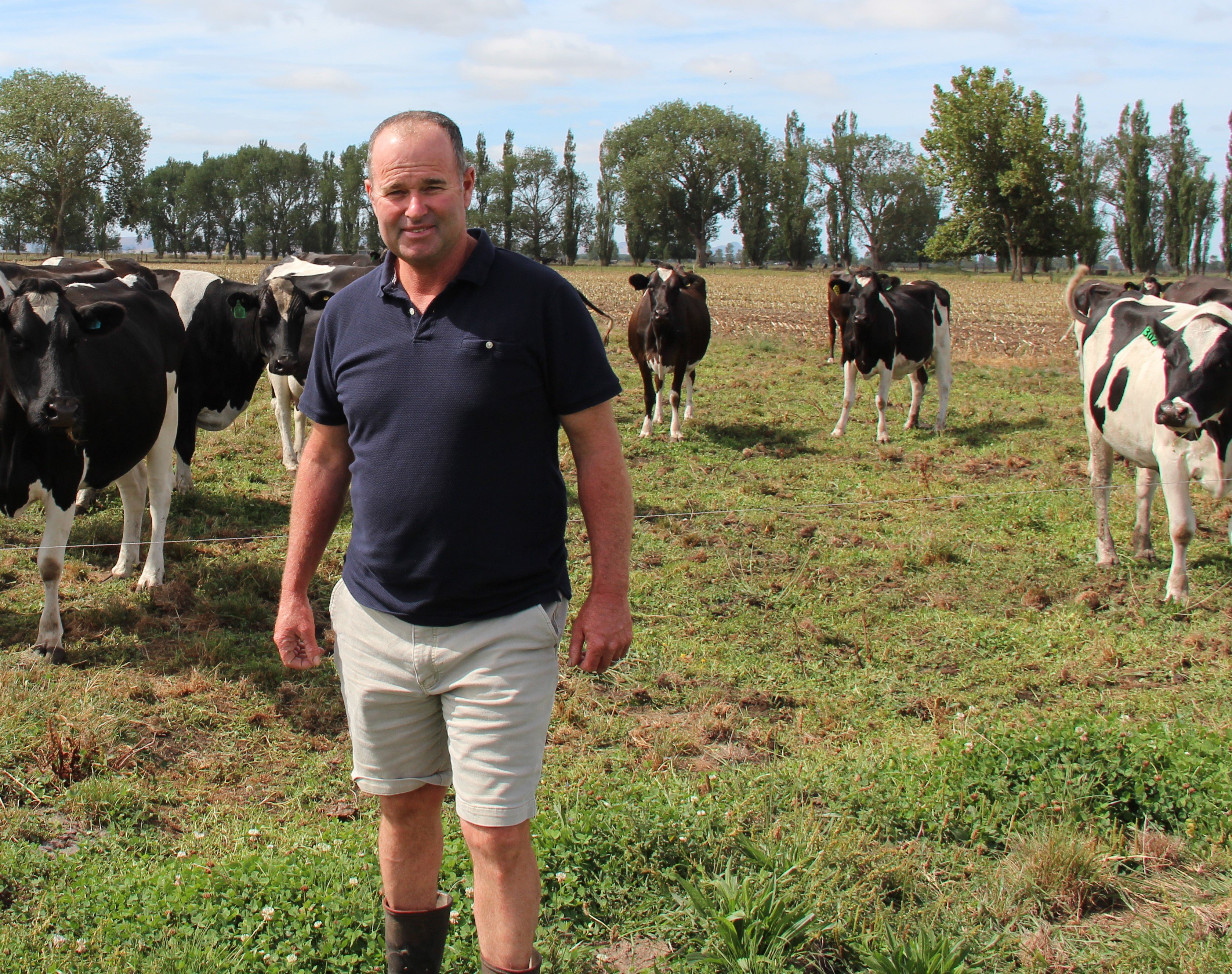For mating we dropped the natural-mate bull and went to a total AI (artificial insemination) 10-week programme,” he says.
That was in direct response to the increased biosecurity risk on farm.
“We’d overcome a significant Johne’s Disease problem on the farm which we’d battled against for more than five years. We were also mindful of the threat of BVD, so we’re always doing all we can – bulk milk testing and ear-notching our animals – we keep an eye on that.
“And of course in the background there’s always the concern about Mycoplasma bovis and the impact that might have.”
 Brendan O'Leary, on his home farm near Gordonton
Brendan O'Leary, on his home farm near Gordonton
All AB response to increased biosecurity risk
To minimise the risk of contamination that live bulls arriving from outside the farm system might present, it made sense to try going with artificial breeding (AB) for the entire mating programme, Brendon says.
The nuts and bolts
“We went for the Premier Sires Forward Pack genetics over our early cows, and then went with SGL Hereford over our lower PW (production worth) cows.”
The decision to go with Forward Pack rather than the traditional Daughter Proven option was driven by a desire to keep up with the rates of genetic gain being achieved by other farmers: “The use of younger bulls cuts the generation interval,” Brendon says.
“I knew we’d start getting left behind the average if we didn’t use Forward Pack, so we’ve taken the punt. We’ve used it, we’ll watch how the calves and heifers progress. Certainly the differentials of the bull teams are significant enough.”
Success factors
Mating results following the first season of all-AB were highly satisfying, Brendon says. “We had 8% empties out of the winter mating, and we had a 78% six-week in calf rate.”
The employment of teaser bulls were a big part of that success, Brendon says. “We’ve grown our own bulls; at nine months we vasectomise them.
“It’s actually an old practise we’ve re-introduced; I think the most value in the teasers came after week-three, when, for example, you’ve got a cow that’s been mated in the first week but she comes around again in week-four. In these cases you’d observe that she’s not showing strong signs, but the teaser bull is following her and won’t let her out of his sight.
Observation was a large part of the farm’s heat detection programme, Brendon says, but so too were heat detection aids.
“We apply them two or three times during the mating period. Every cow that’s been mated gets a new-coloured heat patch.”
Background bio
Brendon farms 400 autumn-calving dairy cows at his 88 hectare (ha) home farm, but owns a further 64ha at nearby Orini which milks 200 spring-calving dairy cows, together with a 69ha runoff in the same district.
The Orini farm is part of LIC’s Sire Proving Scheme, so uses semen from young bulls that are in the process of proving their industry worth.
In 2013 Brendon’s operation was one of several ‘pilot’ farms selected by the-then Johne’s Disease Research Consortium (the consortium) to try new ideas to minimise the risk of exposure and spread of the bacterium Mycobacterium avium subspecies paratuberculosis (MAP).
MAP causes the clinical stages of Johne’s Disease (JD).
Infection affects the small intestine in ruminant animals including dairy animals, with the intestinal wall progressively thickening, before inflammation kicks in to prevent the uptake of essential nutrients.
According to DairyNZ, Johne’s Disease annually costs New Zealand farmers $40-88 million in lost production.
Brendon notes additional, less obvious, costs include lost opportunities for genetic gain in cattle, as well as costs associated with breeding, feeding, and raising young stock that can end up being culled.
“A lot of cows can have Johne’s and they can get through life and have it not go clinical on them. Other cows will come to a stress time, such as calving, and that’s enough to trigger the Johne’s to the clinical state, and they’ll start wasting away,” Brendon says.
The long road back
LIC offers a Johne's Disease test on herd test samples. Cows are categorised based on the level of JD antibodies detected. Categories include: i) high-positive; ii) positive; iii) suspect; iv) no antibodies detected.
“When we delved into things what we found was that there were a lot of my 2- and 3-year-olds with Johne’s that were high-positive or positive. When you’ve got it positive in that age group, it tells you the disease is chronic in your herd.”
After discovering the extent of JD in the herd, Brendon was forced to immediately cull 8% of his herd (all the JD clinical and high-positive cows).
Trends were monitored over the subsequent four years and many positives (initially 5% of the herd) eventually progressed to high-positives over subsequent seasons, so were also culled.
“It was a very challenging time, very heart-breaking,” Brendon says.
Through a combination of targeted mating, separation of mobs, and careful feeding and management regimes of calves, Brendon nowadays feels he’s finally back to running a normal farm.
Johne's Disease - fast facts
- Johne's bacteria are commonly spread from the dam or other adult cows to the calf, usually through faeces, colostrum or milk.
- Because the bacteria may persist in the environment, it's spread through infected pastures and waterways may be significant.
- The bacteria are robust and can survive for up to 18 months in the environment.
- Infection can only be limited by preventing exposure to the bacteria; this requires good hygiene practices - separating calves from dams after initial feeding of colostrum and minimising contact between young and old animals.
- Diseased animals should be removed from the herd as soon as possible and new animals coming to the farm should be tested.
- Due to the protracted nature of the subclinical stages of Johne's disease infection, the full effect of change management practices that reduce transmission will only be seen after several years.




